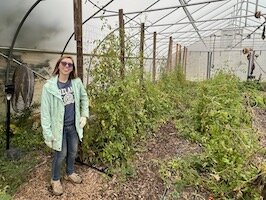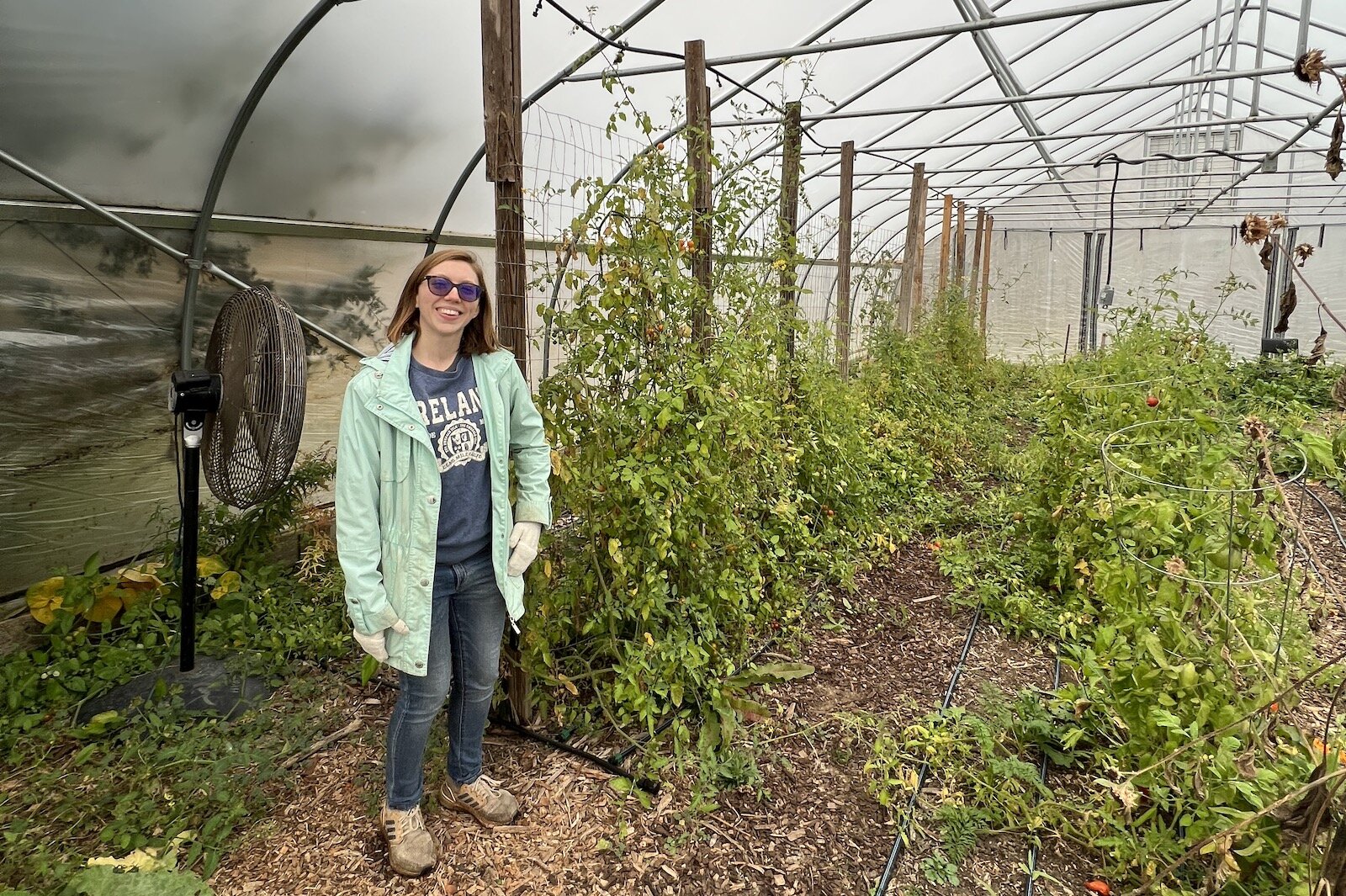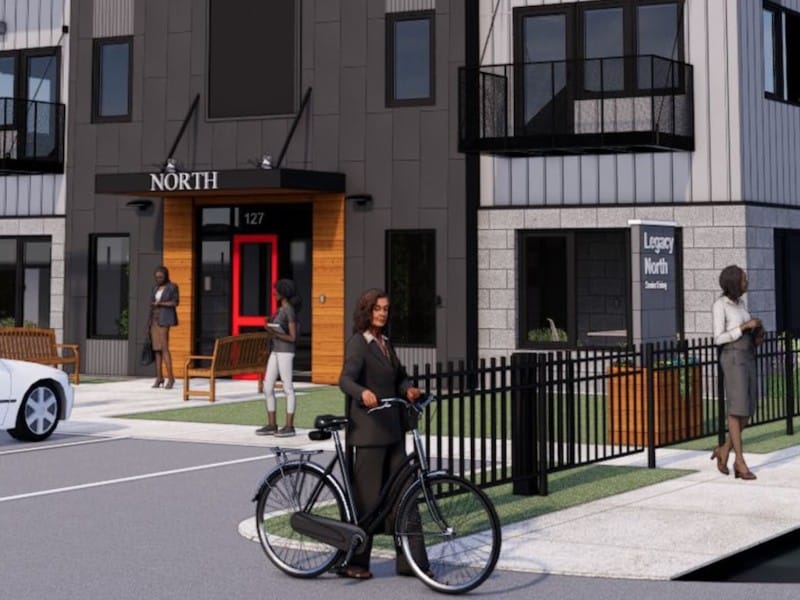The Voices of Youth Kalamazoo program is a collaboration between Southwest Michigan Second Wave and KYD Network, funded by the Stryker Johnston Foundation.
Climate change has been at the forefront of the adult mind for decades. However, today’s youth are the ones who will have to deal with the fallout.
Imagine it’s 7 a.m., and you’re waiting outside with other kids for the school bus to arrive. As cars pass by with people headed to work, fumes come from the exhaust pipes as the vehicles sputter by. Finally, the bus arrives and the driver parks, filling the air with yet more harmful gasses as students board.
“Things like putting more bike lanes up, and electric buses are a no-brainer to me. Kids standing next to polluting buses shouldn’t be a thing anymore,” said Krystal York, formerly of Kalamazoo and a researcher at the Electric Power Research Institute, a Washington, D.C.-based nonprofit, research and development organization that seeks solutions to challenges in the energy industry.
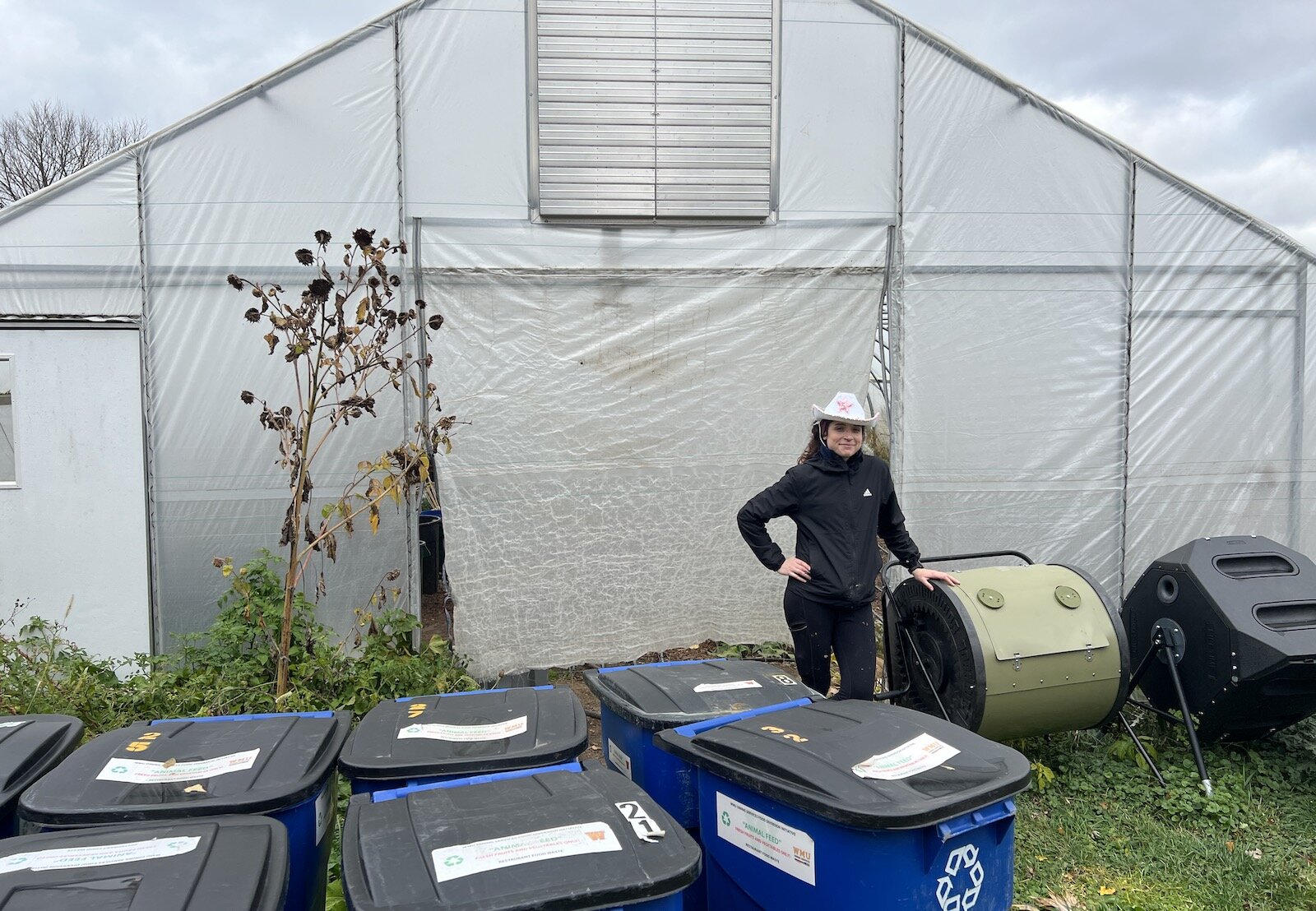
At the local level, attempts to combat climate change have included passing sustainability laws, pursuing developments in environmental science and environmental jobs and building sustainable affordable homes, while area schools are creating environmentally-focused clubs and searching for more sustainable methods of transportation.
The Three Rivers Community Schools procured a pair of electric school buses in 2019 as the district explores new ways to transport students in a safer and more efficient way. The demand for electric vehicles has continued to grow due to rising fuel prices, and is viewed as a more sustainable mode of transportation by many experts.
Across the world, new laws have been enacted to help restrict motor carbon emissions, such as the Clean Air Act and 42 U.S. Code § 7521. Companies like Nike and Coca-Cola have also announced sustainable development plans to be more environmentally friendly here in the United States.
How to get involved
The Electric Power Research Institute (EPRI), the nonprofit energy research and development organization, has an air quality team that looks into different technologies that can impact air quality and particle analysis, as well as a low-carbon resource team focused on ensuring the public has access to electricity around the world.
York, a researcher on the low-carbon resource team at EPRI, said low-carbon resources are another way to make renewable energy. By using electrolysis, where hydrogen and oxygen are split from each other, a machine can create renewable non-fossil fuel energy that can then be used as an energy source.

York has a link to Kalamazoo, and her story shows getting involved with saving the environment as a young person can make a difference. She said her passion for the environment began in college when she worked in the Office for Sustainability at Western Michigan University during her graduate years, as she completed her degree in electrical engineering.
While working in that office, York helped start WMU’s composting program, which still composts all of the food waste from Western’s two largest dining halls. York and her classmates made the composting machine solar-powered to ensure the process was less labor-intensive. They did this by installing PVC pipes underneath the compost pile, which allowed oxygen to be incorporated through the usage of an air pump.
Composting is the mixing of a combination of both organic matters, such as food and yard waste with nitrogen, carbon and moisture, along with oxygen, to speed up the decomposition of scraps. In this process, microbes eat the compost contents, which in turn creates fertile soil that can then be used to plant new plants or help with the growth of already growing plants.
Along with researching and creating more ways to be environmentally friendly, York is also a member of the Kalamazoo Climate Crisis Coalition. The Coalition is a collection of local companies and groups that work to move Kalamazoo off of fossil fuels. One of the main activities the Coalition does is called “Fridays for Future,” an event series coined by climate activist Greta Thunberg, where the Coalition brings in speakers to talk about something they are working on in regard to climate change.

Western isn’t the only university in the state that’s established environmentally-focused organizations. The University of Michigan, for example, has numerous such organizations, including the Environmental Policy Association, Michigan Journal of Environmental and Administrative Law (MJEAL), the Student Sustainability Coalition and the University of Michigan Sustainable Food Program (UMSPF), all of which focus on sustainability and the environment along with ways to improve it. Each September the university also hosts Earthfest, a festival that celebrates sustainability initiatives across its campus and surrounding communities.
Another person who got involved with environmental issues as a student is Mark Robbins, a lecturer at the University of Michigan who studies glacial geochemistry as well as the glaciology cryosphere, and holds a master’s degree in geology from U of M. He became interested in environmental science while studying in Massachusetts, when one of his labs included going on hikes and looking at cliffs’ geological structures.
“I remember we were halfway through the semester, and we were going on a hike up some mountain, and my TA pulls (out) this white chalk and he starts drawing on the mountain,” Robbins said. “He starts showing how you could see millions of years of history of Earth just by going outside and looking around. And the coolest thing is when you know what to look for when you go outside, it’s a whole big story and it’s telling you the past.”
Glacial geochemistry, one of Robbins’ areas of expertise, is the study of the chemistry of glaciers and the chemical processes operating within and upon them both in the present and the past. Robbins said glaciers play a big role in the overall health of the earth’s climate, and, if they were to completely melt, the results would be catastrophic and vary depending on location. Such an event would produce an additional 70 meters of seawater, similar to the height of a sequoia tree, which would be enough to flood every coastal city on the planet.
Kalamazoo takes steps
While such an event wouldn’t directly impact Kalamazoo, at least not at first, the city’s government is taking steps at the local level to ensure it doesn’t contribute to this global problem. Jamie McCarthy, a sustainable development coordinator for the city who works on projects related to environmental responsibility, said Kalamazoo’s increased focus on sustainability and environmental justice started in the fall of 2019.
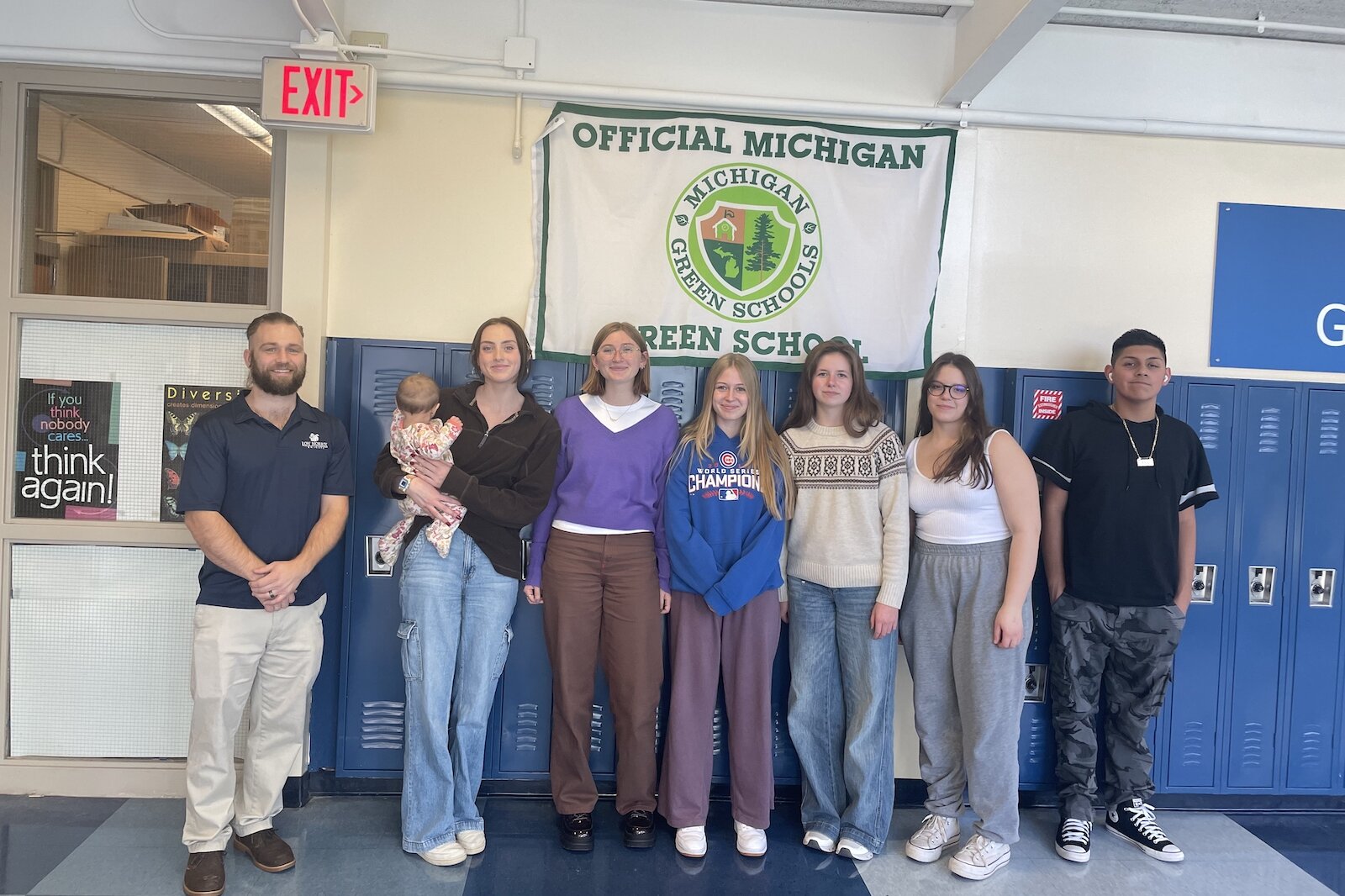
That’s when the Kalamazoo City Commission adopted a resolution recognizing the climate crisis, and later developed a sustainability plan with climate goals and actions attached to it. The plan includes increasing the number of trees planted in town and the city’s solar energy usage, and developing housing initiatives to make houses more “green.” Kalamazoo is also working with Kalamazoo Valley Community College’s Food Innovation Center to research more ways to grow food sustainably.
Steps have also been taken to reduce the amount of fossil fuels utilized by city-owned cars and trucks. In 2021, the city commission approved a $125,000 contract to transition city-owned vehicles to biodiesel to lower the emissions of the fleet. While biodiesel utilizes fossil fuels, the change will result in a reduction in the city’s carbon emissions, moving Kalamazoo closer to environmentally sound sustainability.
The city also worked with the Foundation for Excellence and the Kalamazoo Neighborhood Housing Services to create one three-unit home with plans to build 11 more affordable and sustainable homes before it’s through.
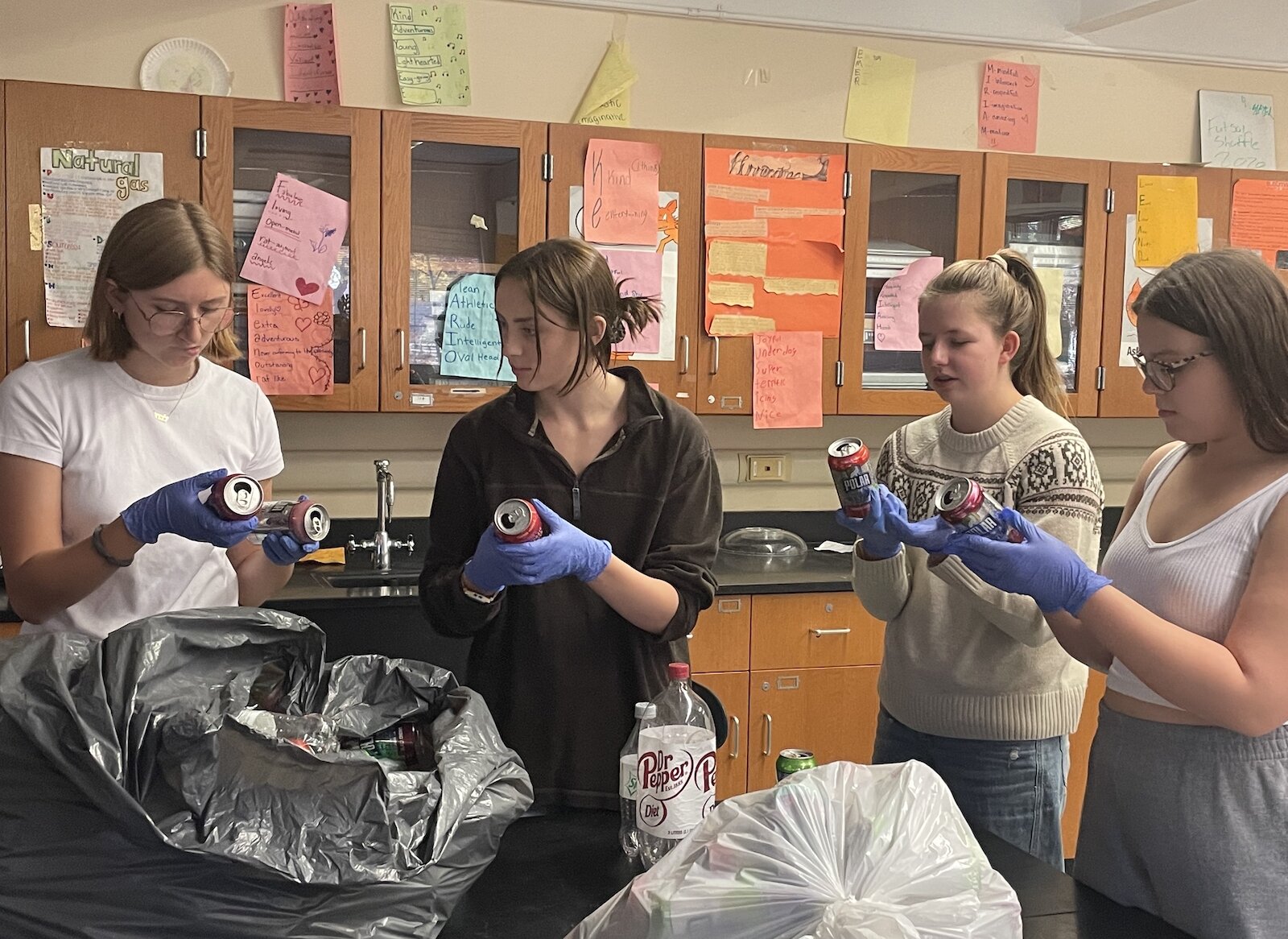
Efforts to combat climate change in Kalamazoo may not garner a lot of headlines, and it probably won’t be the prime topic at family gatherings, but it matters. Those involved with it say the future of the planet depends on this kind of work, no matter how small the actions taken.
“It’s everything to me,” York said. “If we don’t have a planet, we cease to exist. I care so much about the earth and the people on it. And if you care about it, you should care about climate change.”

Conner McBride is a senior at Loy Norrix High School. She has participated in all three of the Voices of Youth Kalamazoo programs since its launch in Summer 2021. Her interests include reading, music, baking, cooking, shooting photos, hiking and traveling. She hopes to become an executive chef one day.

